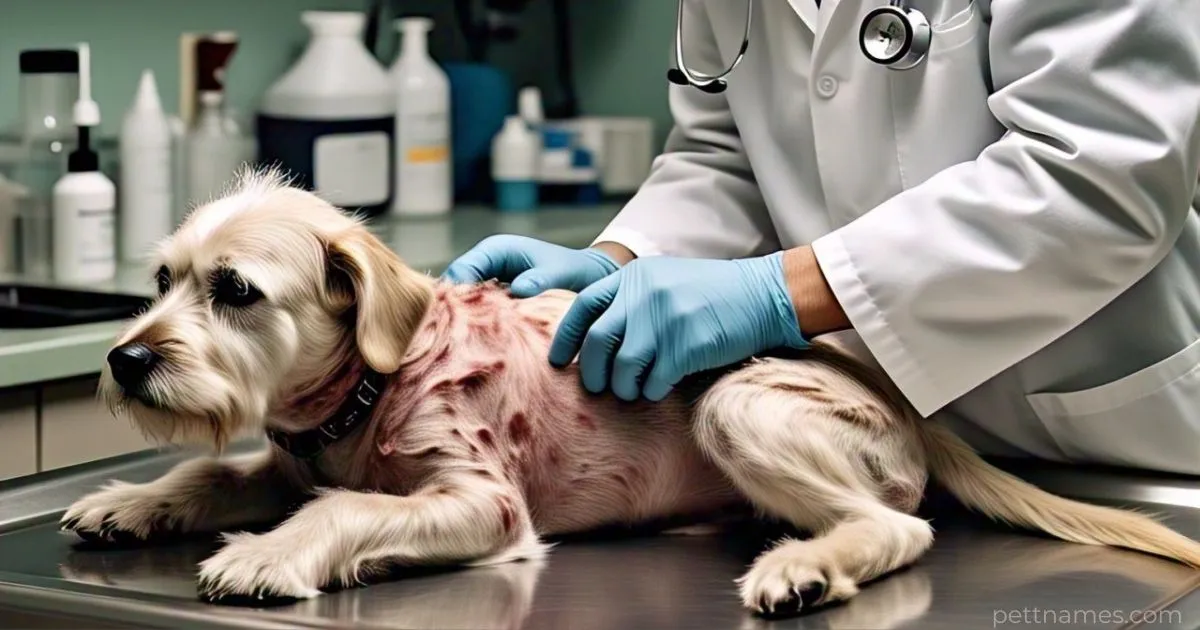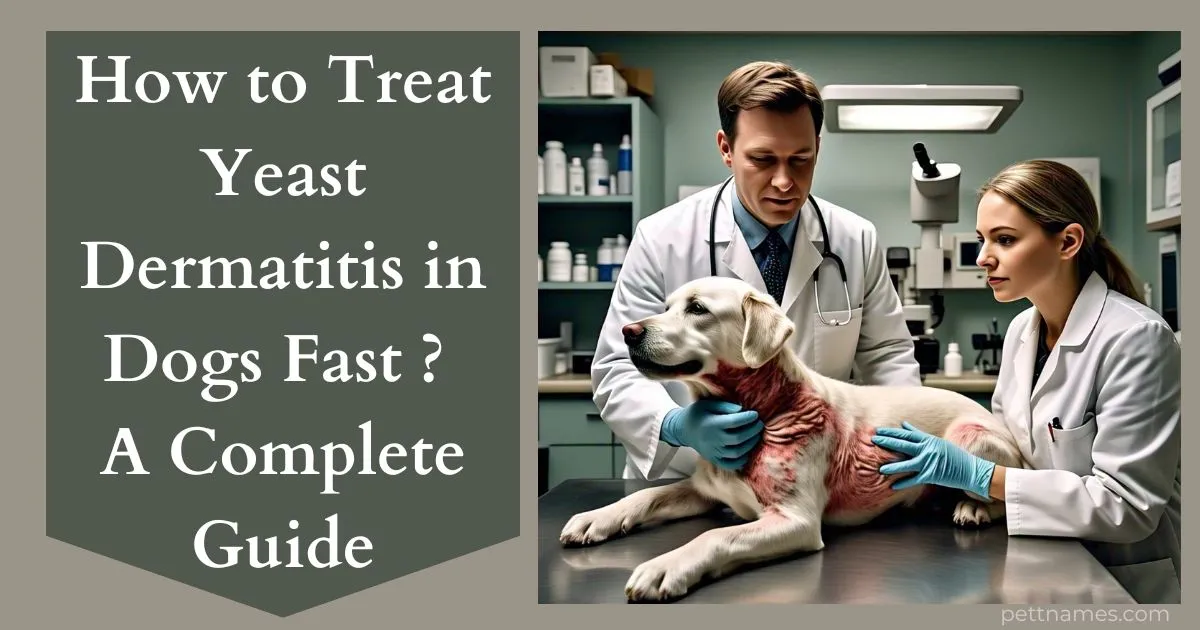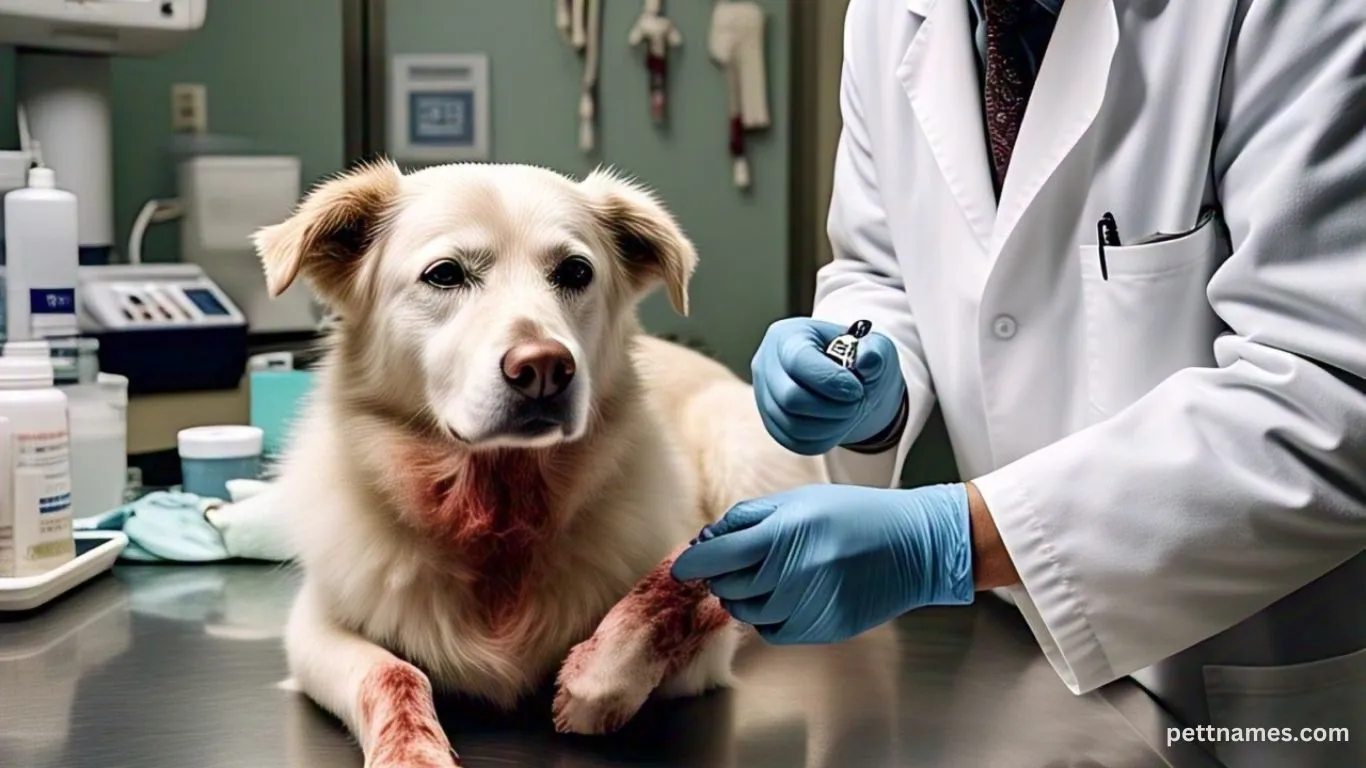Yeast dermatitis is a common yet uncomfortable skin condition that affects many dogs. If your furry friend is constantly scratching, has red, inflamed skin, or emits an unpleasant odor, they might be suffering from this condition. Yeast dermatitis in dogs is caused by an overgrowth of Malassezia yeast, which naturally lives on the skin but can spiral out of control due to various factors. The good news? With the right approach, you can treat yeast dermatitis in dogs fast and restore their comfort.
In this comprehensive guide, we’ll walk you through everything you need to know about yeast dermatitis in dogs—from symptoms and causes to fast-acting treatments and prevention tips. Let’s get started!
What is Yeast Dermatitis in Dogs?

Understanding the Condition
Yeast dermatitis, also known as Malassezia dermatitis, occurs when the Malassezia yeast that naturally resides on your dog’s skin grows excessively. This overgrowth leads to inflammation, itching, and discomfort. While yeast is a normal part of your dog’s skin microbiome, certain conditions can trigger its overproduction, resulting in dermatitis.
Common Causes of Yeast Dermatitis
Several factors can contribute to the development of yeast dermatitis in dogs:
- Allergies: Food or environmental allergies can weaken the skin’s natural defenses.
- Humidity: Warm, moist environments create the perfect breeding ground for yeast.
- Underlying Health Issues: Conditions like hormonal imbalances or a weakened immune system can make dogs more susceptible.
- Poor Grooming: Infrequent bathing or improper drying can lead to yeast buildup.
Symptoms of Yeast Dermatitis in Dogs

Visible Signs to Watch For
If your dog is suffering from yeast dermatitis, you may notice:
- Red, inflamed skin
- Itching and scratching
- Greasy or flaky skin
- A strong, musty odor
Behavioral Changes
Your dog may also exhibit behavioral changes, such as:
- Restlessness or irritability
- Excessive licking or chewing of affected areas
If you notice these symptoms, it’s time to take action to treat yeast dermatitis in dogs fast.
How to Treat Yeast Dermatitis in Dogs Fast

Step 1: Visit Your Veterinarian
The first step in treating yeast dermatitis is to consult your veterinarian. A proper diagnosis is crucial to rule out other skin conditions and determine the severity of the infection. Your vet may perform tests like skin scrapings or cultures to confirm the presence of yeast.
Step 2: Medicated Treatments
Once diagnosed, your vet may recommend the following treatments:
- Antifungal Shampoos and Sprays: These are specially formulated to reduce yeast overgrowth and soothe irritated skin.
- Oral Antifungal Medications: For severe cases, oral medications like ketoconazole may be prescribed.
- Topical Creams or Ointments: These can be applied directly to affected areas for targeted relief.
Tips for Effective Application
- Bathe your dog with medicated shampoo as directed by your vet, usually 2-3 times a week.
- Follow the recommended frequency for applying sprays or creams to ensure the best results.
Step 3: Home Remedies for Quick Relief
In addition to medicated treatments, you can try these home remedies to speed up recovery:
- Apple Cider Vinegar Rinses: Dilute apple cider vinegar with water and apply it to your dog’s skin to restore pH balance.
- Coconut Oil Applications: Coconut oil has natural antifungal properties and can soothe irritated skin.
- Probiotics: Adding probiotics to your dog’s diet can support skin health and boost their immune system.
Preventing Yeast Dermatitis in Dogs

Maintain Proper Hygiene
Regular grooming is essential to prevent yeast overgrowth. Here’s how:
- Bathe your dog regularly with a gentle, antifungal shampoo.
- Dry your dog thoroughly after baths or swimming to prevent moisture buildup.
Diet and Nutrition
A healthy diet can make a big difference in preventing yeast dermatitis:
- Switch to a hypoallergenic or grain-free diet if your dog has food allergies.
- Add supplements like omega-3 fatty acids to support skin health.
Environmental Adjustments
Make your home less hospitable to yeast:
- Reduce humidity with a dehumidifier.
- Use antifungal sprays on your dog’s bedding and favorite spots.
You may also like:
Hypoallergenic Food for Dogs Homemade: Allergy Relief
When to Seek Professional Help
Signs Your Dog Needs a Vet
If your dog’s symptoms persist or worsen despite treatment, it’s time to consult your vet. Persistent yeast dermatitis could indicate an underlying health issue that needs attention.
Long-Term Management Strategies
For dogs prone to recurring yeast dermatitis, long-term management is key:
- Schedule regular vet check-ups to monitor your dog’s skin health.
- Stay vigilant for early signs of yeast overgrowth.
Conclusion
Yeast dermatitis in dogs can be uncomfortable and frustrating, but with the right approach, you can treat it fast and effectively. Start by consulting your veterinarian, follow their recommended treatments, and incorporate preventive measures to keep your dog’s skin healthy.
Your furry friend deserves to live a happy, itch-free life. Don’t wait—start treating your dog’s yeast dermatitis today!
FAQs: How to Treat Yeast Dermatitis in Dogs Fast
Yeast dermatitis in dogs can be a frustrating and uncomfortable condition for both pets and their owners. If your dog is scratching incessantly, has red, inflamed skin, or smells unusual, you likely have questions about how to help them feel better quickly. Below, we’ve answered the 10 most common questions about treating yeast dermatitis in dogs fast. Let’s dive in!
1. What Are the Fastest Ways to Treat Yeast Dermatitis in Dogs?
The fastest way to treat yeast dermatitis is to combine medicated treatments with home remedies. Start by visiting your vet for a proper diagnosis. They may prescribe antifungal shampoos, sprays, or oral medications. At home, you can use natural remedies like apple cider vinegar rinses or coconut oil to soothe your dog’s skin.
2. Can I Treat Yeast Dermatitis in Dogs at Home?
Yes, you can treat mild cases of yeast dermatitis at home. Apple cider vinegar rinses, coconut oil applications, and probiotics are effective natural remedies. However, for severe or persistent cases, consult your vet for professional treatment options.
3. What Are the Best Shampoos for Yeast Dermatitis in Dogs?
The best shampoos for yeast dermatitis contain antifungal ingredients like ketoconazole, chlorhexidine, or miconazole. Popular options include:
- Malaseb Medicated Shampoo
- Veterinary Formula Antiseptic & Antifungal Shampoo
- Douxo Chlorhexidine PS Shampoo
Always follow your vet’s recommendations for frequency and application.
4. How Long Does It Take to Treat Yeast Dermatitis in Dogs?
With proper treatment, most dogs show improvement within 2-4 weeks. Severe cases may take longer. Consistency is key—follow your vet’s instructions and complete the full course of treatment to prevent recurrence.
5. Are There Natural Remedies for Yeast Dermatitis in Dogs?
Yes, several natural remedies can help:
- Apple Cider Vinegar: Dilute with water and apply to affected areas to restore skin pH.
- Coconut Oil: Apply topically to soothe and moisturize the skin.
- Probiotics: Add to your dog’s diet to support skin health and immunity.
While these remedies can be effective, they work best alongside medicated treatments.
6. What Causes Yeast Dermatitis in Dogs?
Yeast dermatitis is caused by an overgrowth of Malassezia yeast, which thrives in warm, moist environments. Common triggers include:
- Allergies (food or environmental)
- Humidity
- Poor grooming habits
- Underlying health issues (e.g., hormonal imbalances)
7. Can Diet Help Treat Yeast Dermatitis in Dogs?
Yes, diet plays a significant role in managing yeast dermatitis. Switch to a hypoallergenic or grain-free diet if your dog has food allergies. Adding omega-3 fatty acids and probiotics can also support skin health and reduce inflammation.
8. What Are the Symptoms of Yeast Dermatitis in Dogs?
Common symptoms include:
- Red, inflamed skin
- Itching and scratching
- Greasy or flaky skin
- A strong, musty odor
If you notice these signs, start treatment immediately to prevent the condition from worsening.
9. Is Yeast Dermatitis in Dogs Contagious to Humans?
No, yeast dermatitis is not contagious to humans. However, it’s important to treat your dog promptly to prevent secondary infections and discomfort.
10. When Should I Take My Dog to the Vet for Yeast Dermatitis?
Take your dog to the vet if:
- Symptoms persist or worsen despite home treatment.
- Your dog seems excessively uncomfortable or in pain.
- You notice signs of infection, such as pus or open sores.
A vet can provide a proper diagnosis and recommend stronger treatments if needed.
Yeast dermatitis in dogs can be uncomfortable, but with the right approach, you can treat it fast and effectively. Whether you’re using medicated treatments, natural remedies, or a combination of both, consistency is key to helping your dog feel better.
Don’t wait—start treating your dog’s yeast dermatitis today! Your furry friend will thank you for the relief.
For more posts please visit to our website pettnames.com
Read also:
How to Cut Dog Nails Safely Without Hurting Them: A Step-by-Step Guide


